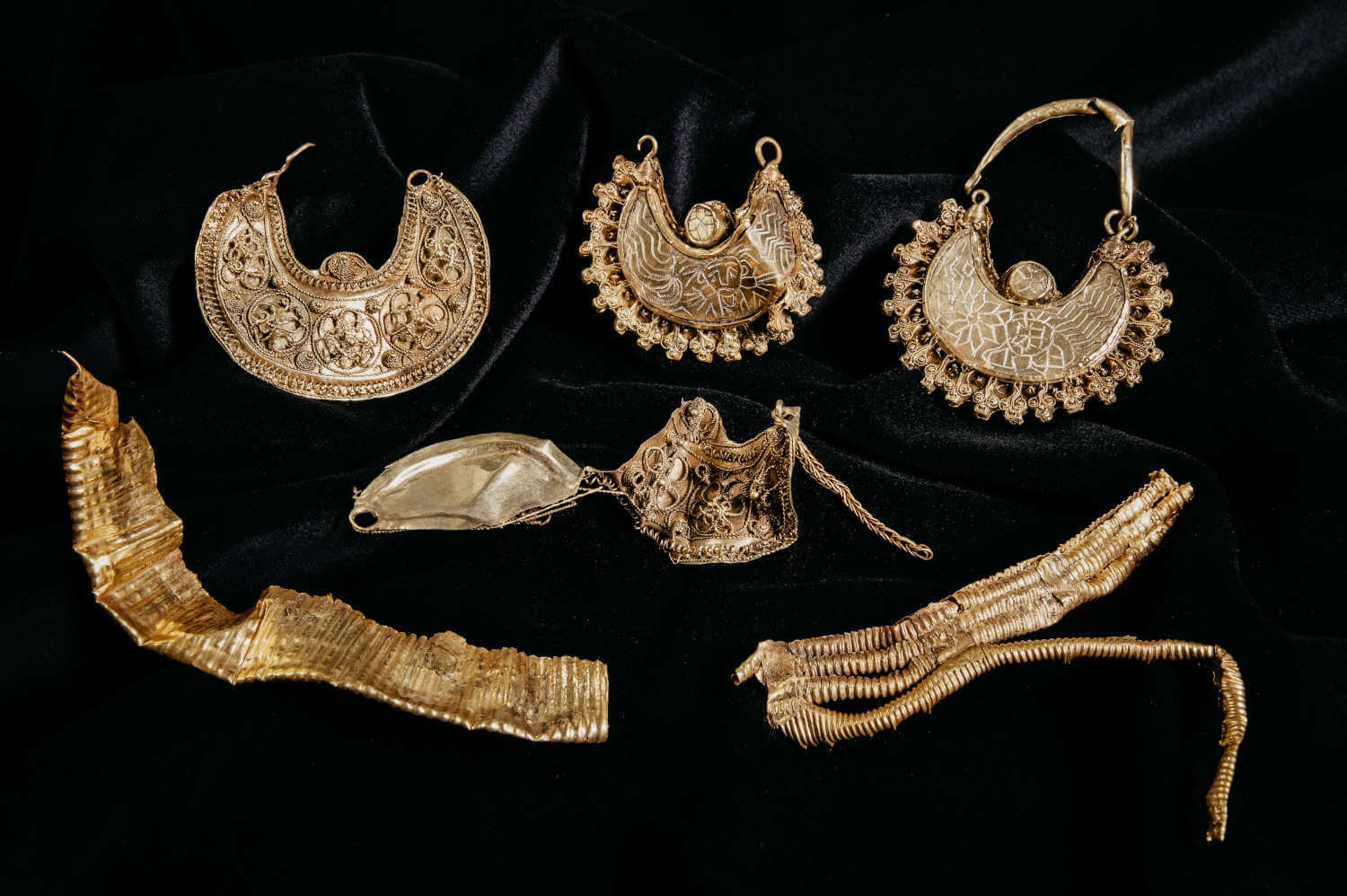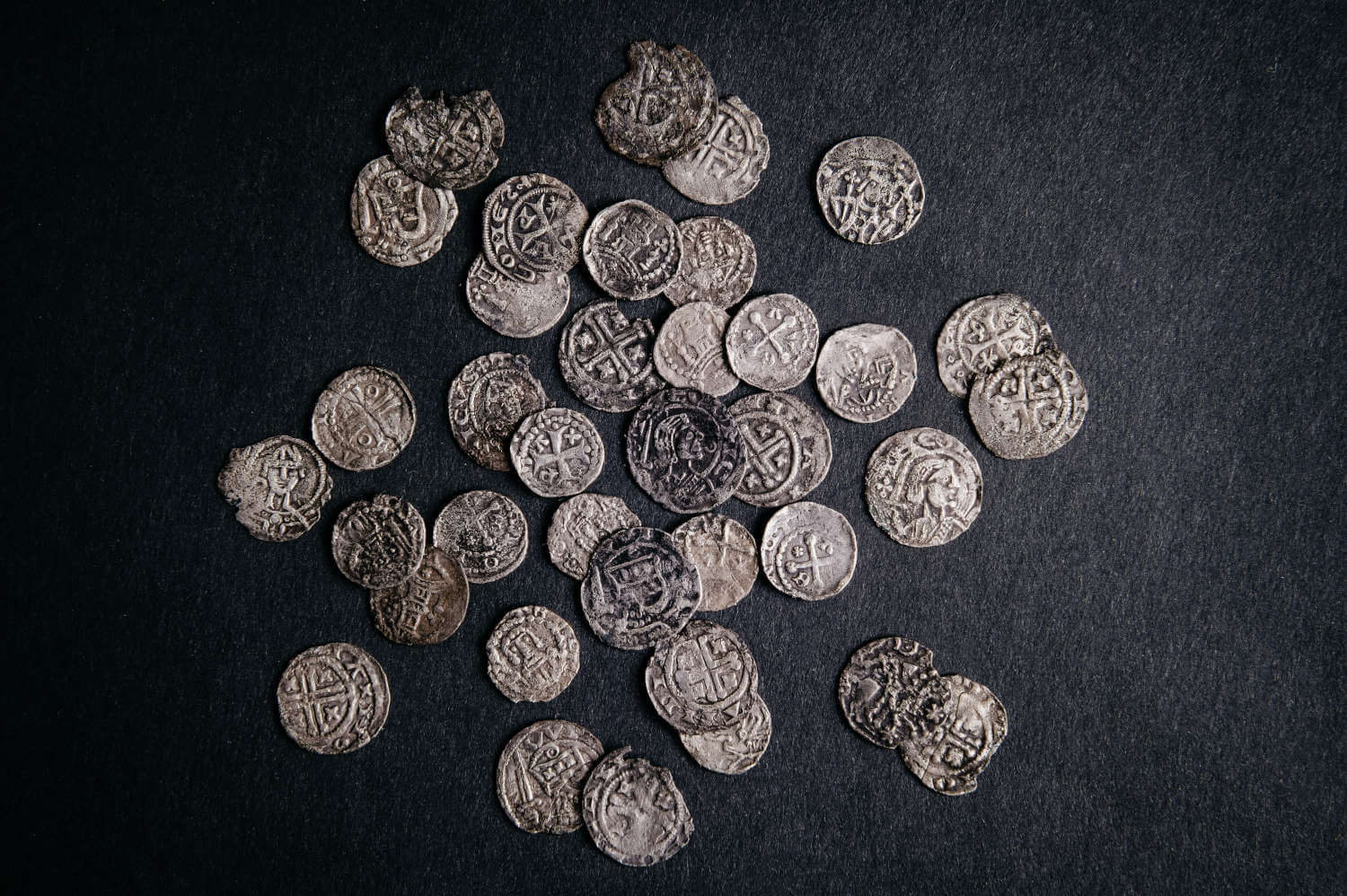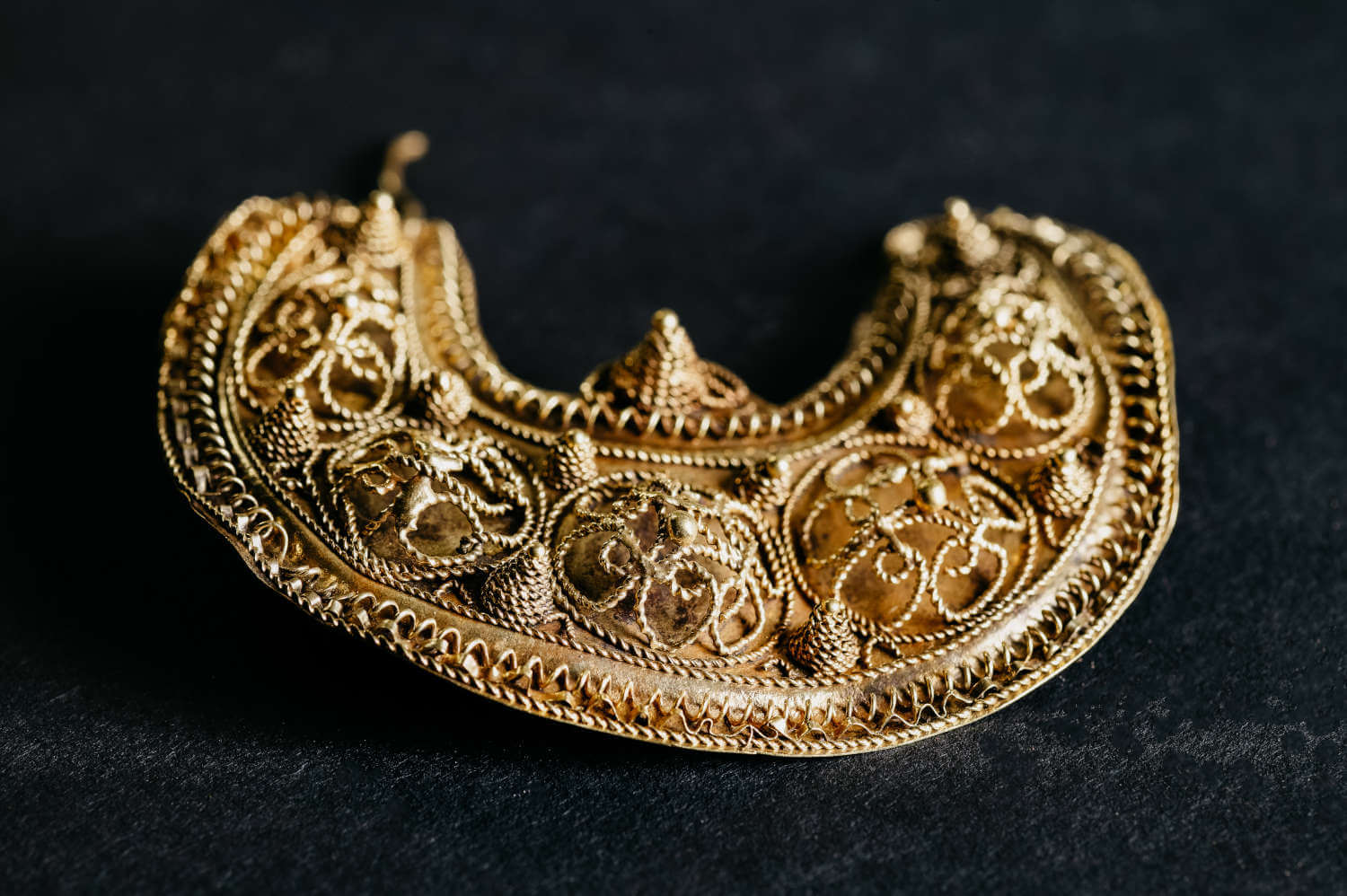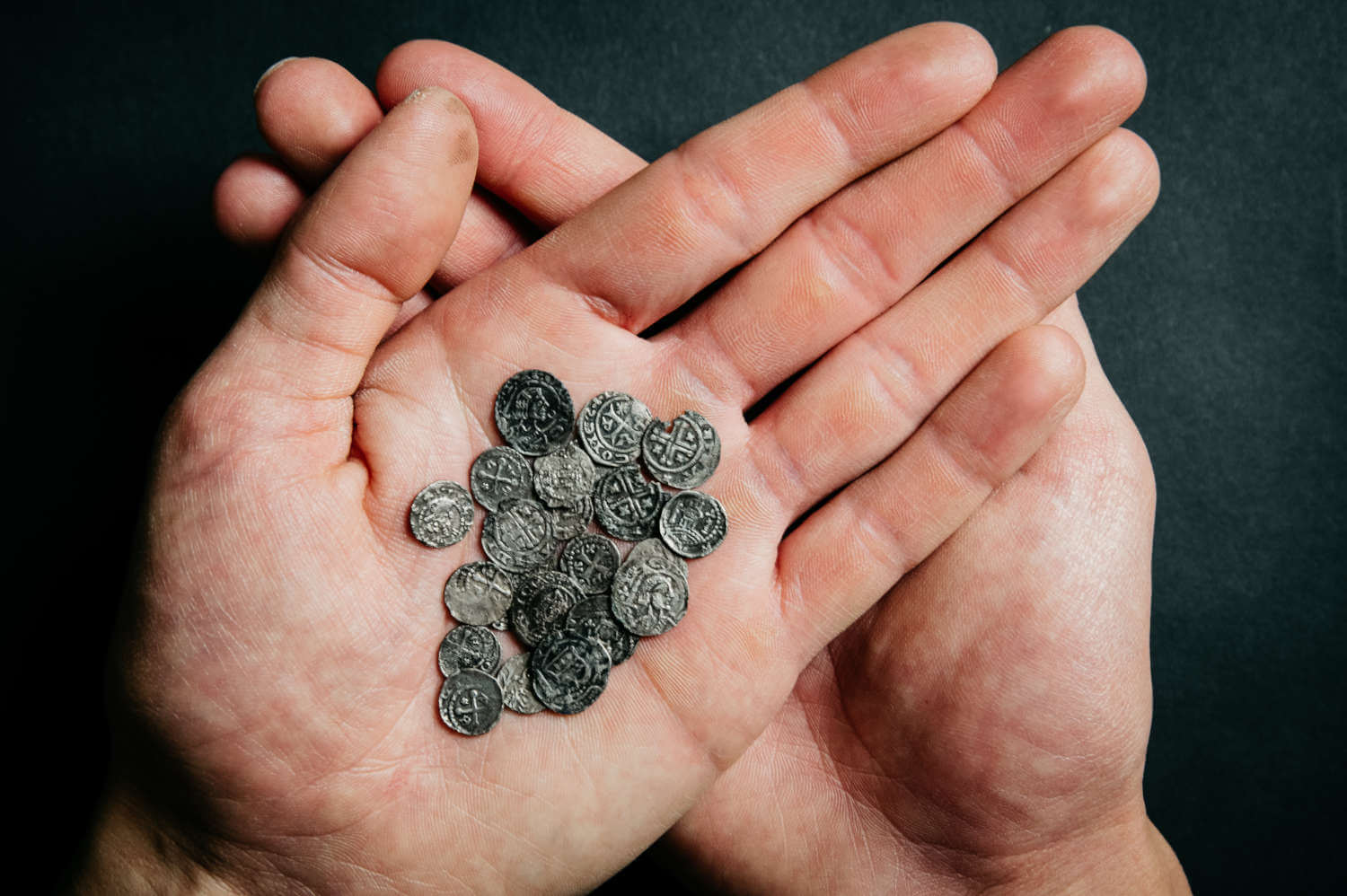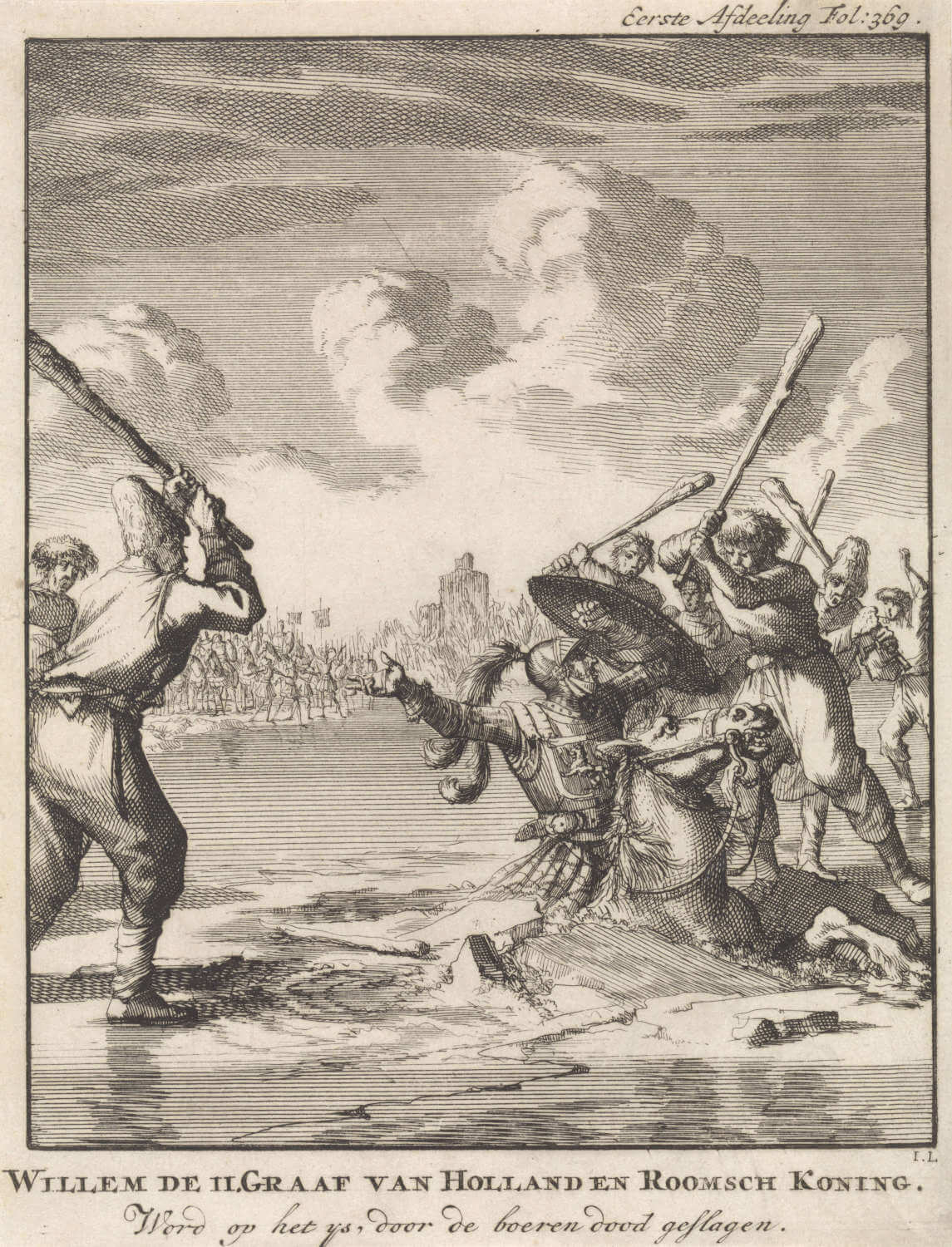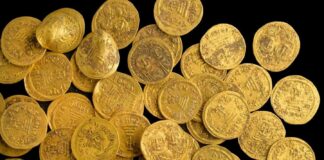In 2021, a detectorist found a thousand-year-old gold treasure in Hoogwoud (municipality of Opmeer, the Netherlands): four decorated gold pendants in the shape of a crescent moon. He found two matching gold objects and 39 small silver coins. The coins date to the period between 1200 and 1250, when the treasure was apparently hidden. At the time, the jewellery was already two hundred years old – an expensive and valuable possession. Medieval gold jewellery is extremely rare in the Netherlands, and it was buried at a time of important historical events. It was the eventful period of armed conflict between West Friesland and the County of Holland and the assassination of the Dutch Count and King William II near Hoogwoud. This makes these ornaments and coins extremely important for the archaeology and history of North Holland and West Friesland and means that they are even of (inter)national importance. The treasure can be admired in the main hall of the Rijksmuseum van Oudheden in Leiden until mid-June and later this year in the new exhibition “Het Jaar 1000” (13 October 2023 until 17 March 2024).
Jewellery and Coins
The most important objects of the Hoogwoud Hoard are the four earrings from the 11th century (1000-1050). There are two pairs: two earrings with engraved depictions and two with detailed decorations. They are finely twisted gold threads and beads. The jewellery is decorated on one side and has fragile loops. This indicates that they were probably not put through the ears but worn on a headpiece or headband so that only one side was visible. We know of corresponding examples from German depictions of the same period. The two fluted strips of gold leaf were also once attached to the edge of a piece of clothing or a ribbon, as is demonstrated by textile fibres that were found on them. One of the pendants is badly damaged, probably due to the ploughing of the soil in which the piece was buried for centuries. The depiction of a male head with rays on another specimen is interpreted as a portrait of Christ, as “Sol Invictus”, the unconquered sun. Only three similar gold earrings from the Netherlands are known of.
The 39 small silver pfennigs, as the coins were called, indicate when the hoard was buried: in or shortly after 1248. Small pieces of textile fibre found with the coins indicate that the coins were kept in a cloth or bag. They are from the diocese of Utrecht, from various counties (Holland, Guelders and Kleve) and from the Holy Roman Empire. The youngest specimens were minted in 1247 or 1248 under William II as King of the Holy Roman Empire.
The Hoogwoud Hoard was buried in the 13th century, at the time of the battles between West Friesland and the Count of Holland, who tried to annex this territory. Hoogwoud, one of the most important cities in West Friesland at the time, played an important role in this. In 1256, William II went to Hoogwoud to subjugate the troops from West Friesland. But he was killed by them and secretly buried in Hoogwoud.
On Exhibition in Leiden
After the discovery, the finder – detectorist and historian Lorenzo Ruijter – recorded the hoard with Archeologie West-Friesland. Since it is an archaeological find of national importance, it was decided to give the hoard as a temporary loan to the National Museum of Antiquities in Leiden, where the national archaeological collection is kept and presented. The jewellery and the coins remain in the possession of the finder.
More information can be found on the website of the Rijksmuseum van Oudheden.
In 2019, a detectorist found an early medieval hoard of gold and silver coins in the Netherlands.




